In the rapidly evolving landscape of electric vehicles, two notable contenders have emerged from China: the BYD Tang and the XPeng G9. Both models boast electrifying performance, cutting-edge technology, and thoughtful innovations aimed at enhancing the driving experience. In this article, we will delve into a detailed comparison of these two SUVs, examining their technical aspects, performance metrics, and unique features.
BYD Tang vs XPeng G9 – Which car suits you better?
Compare performance, boot capacity, efficiency and price at a glance.
Find out which car is the better choice for you – BYD Tang or XPeng G9?
Powertrain and Performance
The BYD Tang comes equipped with an impressive all-wheel drive (AWD) system, producing an astounding 517 HP (380 kW) and 680 Nm of torque. This translates to a swift acceleration of 0-100 km/h in just 4.9 seconds, along with a top speed of 190 km/h. It features a consumption rate of 24 kWh/100km and offers a substantial electric range of 530 km, making it a strong contender for long-distance journeys.
On the other hand, the XPeng G9 presents a more diverse powertrain, available in both rear-wheel drive (RWD) and all-wheel drive configurations. The power output varies significantly, with options ranging from 313 HP (230 kW) to an impressive 551 HP (405 kW). The G9's torque output peaks at 717 Nm, allowing it to sprint from 0-100 km/h in as little as 3.9 seconds, which is noticeably faster than the Tang. With an electric range between 460 km to 570 km depending on the battery configuration, it offers versatility suited for different driving needs.
Battery and Efficiency
Battery capacity is crucial for electric vehicles, and the BYD Tang houses a capable system that allows it to achieve its electric range with relative efficiency. In contrast, the XPeng G9 takes advantage of larger battery options, featuring capacities of 75.8 kWh and up to 93.1 kWh, making it suitable for users who prioritize longer ranges. The G9 also showcases a slightly better efficiency, with consumption ranging from 19.4 kWh to 21.3 kWh/100km, compared to the Tang's 24 kWh, which may appeal to those focused on minimizing energy costs.
Dimensions and Interior Space
When comparing the dimensions, the BYD Tang measures 4970 mm in length, 1955 mm in width, and 1745 mm in height. It comfortably accommodates up to seven passengers, making it an attractive option for families or those needing extra space. The trunk capacity of 235 liters adds further practicality to its design.
The XPeng G9, while slightly shorter at 4891 mm, offers a wider profile at 1937 mm, contributing to a spacious interior feel. It is designed to seat five passengers and boasts a significantly larger trunk capacity of 660 liters, which may appeal to buyers looking for cargo versatility. The G9’s height ranges from 1670 mm to 1680 mm, presenting a modern silhouette while maintaining excellent aerodynamics.
Innovative Technology and Features
Both vehicles are equipped with advanced technology that enhances the driving experience. The BYD Tang incorporates various smart features, including a sophisticated infotainment system, driver-assistance technologies, and an ergonomic interface designed for comfort and usability.
Meanwhile, XPeng has made headlines with its autonomous driving capabilities, particularly with its XPILOT system, which offers an array of advanced driver-assistance features. The G9 is focused on a higher level of connectivity and user experience, with over-the-air updates that ensure the vehicle's software remains cutting-edge.
Conclusion: Which SUV Reigns Supreme?
Choosing between the BYD Tang and the XPeng G9 ultimately boils down to individual preferences and priorities. The Tang offers formidable power, a spacious seven-seat layout, and a strong electric range, making it an excellent family-oriented SUV. On the flip side, the XPeng G9 excels in performance, innovative technology, and cargo capacity, appealing to tech-savvy drivers who crave both speed and cutting-edge features.
As both manufacturers continue to innovate and improve their offerings, the race in the electric SUV market is sure to become even more competitive. Potential buyers would do well to consider their specific needs and driving habits before making a decision.
Here’s where it gets real: The technical differences in detail
Costs and Efficiency:
Price and efficiency are key factors when choosing a car – and this is often where the real differences emerge.
XPeng G9 has a evident advantage in terms of price – it starts at 51100 £, while the BYD Tang costs 64300 £. That’s a price difference of around 13200 £.
In terms of energy consumption, the advantage goes to the XPeng G9: with 18.40 kWh per 100 km, it’s clearly perceptible more efficient than the BYD Tang with 24 kWh. That’s a difference of about 5.60 kWh.
As for range, the XPeng G9 performs hardly perceptible better – achieving up to 585 km, about 55 km more than the BYD Tang.
Engine and Performance:
Power, torque and acceleration are the classic benchmarks for car enthusiasts – and here, some clear differences start to show.
When it comes to engine power, the XPeng G9 has a slightly edge – offering 575 HP compared to 517 HP. That’s roughly 58 HP more horsepower.
In acceleration from 0 to 100 km/h, the XPeng G9 is a bit quicker – completing the sprint in 4.20 s, while the BYD Tang takes 4.90 s. That’s about 0.70 s faster.
In terms of top speed, the XPeng G9 performs hardly perceptible better – reaching 200 km/h, while the BYD Tang tops out at 190 km/h. The difference is around 10 km/h.
There’s also a difference in torque: XPeng G9 pulls slight stronger with 695 Nm compared to 680 Nm. That’s about 15 Nm difference.
Space and Everyday Use:
Beyond pure performance, interior space and usability matter most in daily life. This is where you see which car is more practical and versatile.
Seats: BYD Tang offers distinct more seating capacity – 7 vs 5.
In curb weight, XPeng G9 is somewhat lighter – 2210 kg compared to 2630 kg. The difference is around 420 kg.
In terms of boot space, the XPeng G9 offers convincingly more room – 660 L compared to 235 L. That’s a difference of about 425 L.
In maximum load capacity, the BYD Tang performs hardly perceptible better – up to 1655 L, which is about 79 L more than the XPeng G9.
Who comes out on top?
Overall, the XPeng G9 shows itself to be outperforms in nearly all aspects and secures the title of DriveDuel Champion.
It convinces with the more balanced overall package and proves to be the more versatile choice for everyday use.
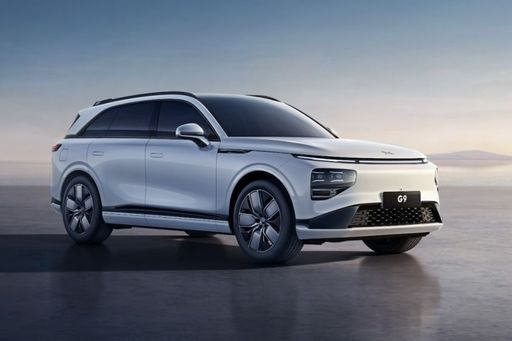 @ XPeng Motors
@ XPeng Motors
XPeng G9
BYD Tang
The BYD Tang represents a bold entry into the competitive SUV market, blending cutting-edge technology with modern design aesthetics. Its spacious interior is complemented by high-quality materials and innovative features, making it a strong contender for families and tech enthusiasts alike. With an emphasis on sustainability, the Tang offers an eco-friendly driving experience without compromising on performance or luxury.
details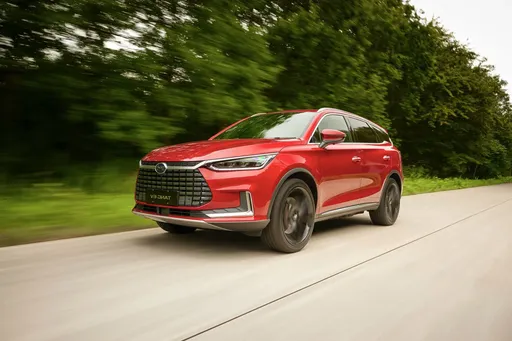 @ BYD Auto / BYD Global Media
@ BYD Auto / BYD Global Media
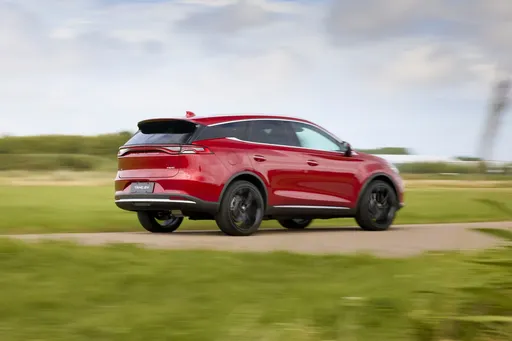 @ BYD Auto / BYD Global Media
@ BYD Auto / BYD Global Media
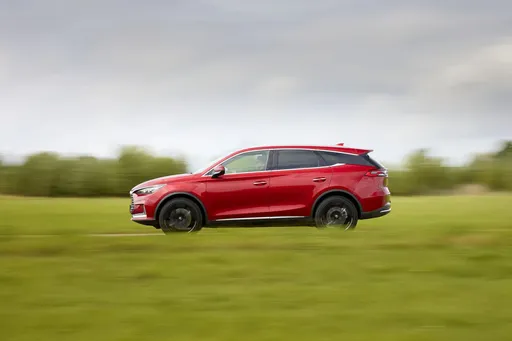 @ BYD Auto / BYD Global Media
@ BYD Auto / BYD Global Media
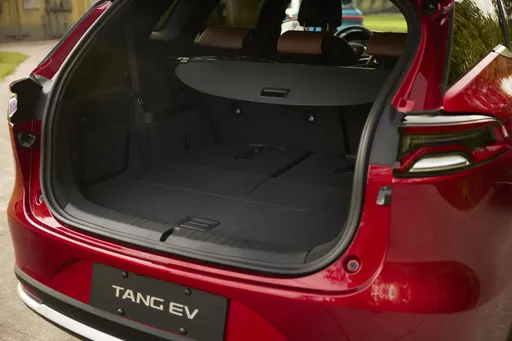 @ BYD Auto / BYD Global Media
@ BYD Auto / BYD Global Media
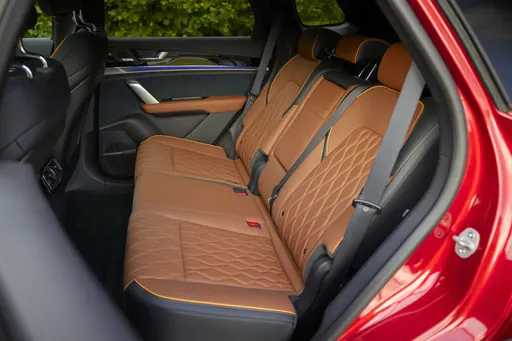 @ BYD Auto / BYD Global Media
@ BYD Auto / BYD Global Media
XPeng G9
The XPeng G9 is a striking electric SUV that captures attention with its sleek design and futuristic features. This vehicle is designed to offer an impressive range, making it ideal for long journeys with minimal stops. Inside, the G9 boasts a high-tech cabin equipped with advanced connectivity options and luxurious materials, ensuring a comfortable and engaging ride for both driver and passengers.
details @ XPeng Motors
@ XPeng Motors
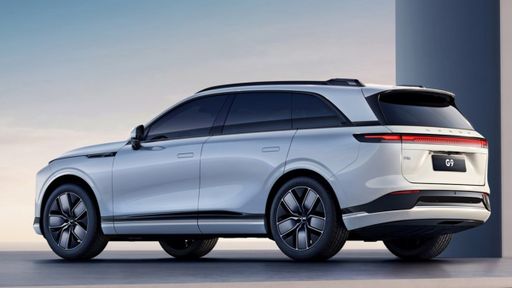 @ XPeng Motors
@ XPeng Motors
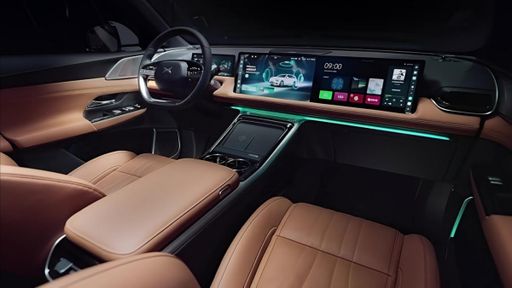 @ XPeng Motors
@ XPeng Motors
 @ BYD Auto / BYD Global Media
@ BYD Auto / BYD Global Media
|
 @ XPeng Motors
@ XPeng Motors
|
|
|
|
Costs and Consumption |
|
|---|---|
|
Price
64300 £
|
Price
51100 - 62200 £
|
|
Consumption L/100km
-
|
Consumption L/100km
-
|
|
Consumption kWh/100km
24 kWh
|
Consumption kWh/100km
18.4 - 20.1 kWh
|
|
Electric Range
530 km
|
Electric Range
502 - 585 km
|
|
Battery Capacity
-
|
Battery Capacity
78.2 - 92.2 kWh
|
|
co2
0 g/km
|
co2
0 g/km
|
|
Fuel tank capacity
-
|
Fuel tank capacity
-
|
Dimensions and Body |
|
|---|---|
|
Body Type
SUV
|
Body Type
SUV
|
|
Seats
7
|
Seats
5
|
|
Doors
5
|
Doors
5
|
|
Curb weight
2630 kg
|
Curb weight
2210 - 2395 kg
|
|
Trunk capacity
235 L
|
Trunk capacity
660 L
|
|
Length
4970 mm
|
Length
4891 mm
|
|
Width
1955 mm
|
Width
1937 mm
|
|
Height
1745 mm
|
Height
1670 - 1680 mm
|
|
Max trunk capacity
1655 L
|
Max trunk capacity
1576 L
|
|
Payload
575 kg
|
Payload
-
|
Engine and Performance |
|
|---|---|
|
Engine Type
Electric
|
Engine Type
Electric
|
|
Transmission
Automatic
|
Transmission
Automatic
|
|
Transmission Detail
Reduction Gearbox
|
Transmission Detail
Reduction Gearbox
|
|
Drive Type
All-Wheel Drive
|
Drive Type
Rear-Wheel Drive, All-Wheel Drive
|
|
Power HP
517 HP
|
Power HP
351 - 575 HP
|
|
Acceleration 0-100km/h
4.90 s
|
Acceleration 0-100km/h
4.2 - 6.6 s
|
|
Max Speed
190 km/h
|
Max Speed
200 km/h
|
|
Torque
680 Nm
|
Torque
465 - 695 Nm
|
|
Number of Cylinders
-
|
Number of Cylinders
-
|
|
Power kW
380 kW
|
Power kW
258 - 423 kW
|
|
Engine capacity
-
|
Engine capacity
-
|
General |
|
|---|---|
|
Model Year
2024
|
Model Year
2025
|
|
CO2 Efficiency Class
A
|
CO2 Efficiency Class
A
|
|
Brand
BYD
|
Brand
XPeng
|
Is the BYD Tang offered with different drivetrains?
The BYD Tang is available as All-Wheel Drive.
The prices and data displayed are estimates based on German list prices and may vary by country. This information is not legally binding.
